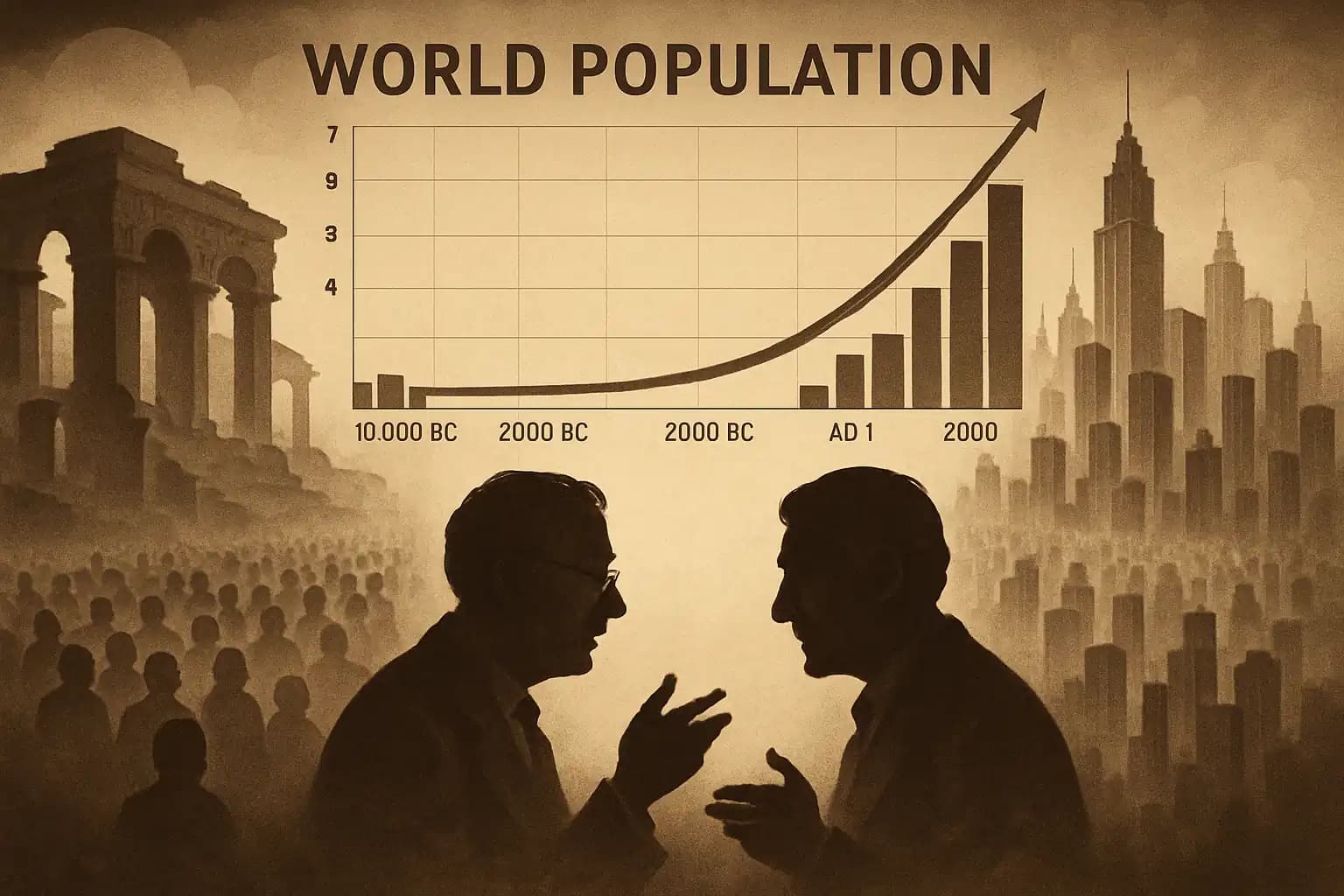If you believe the world’s population charts, it looks like humans hibernated until the 18th century—then BAM, eight billion in a few centuries! This suspicious graph climb sparks online speculation: were our ancestors hiding, or are we victims of dazzling population propaganda?
Dig deeper, and the unsettling answer is disappointingly rational. Historical population data isn’t “lied about.” Instead, it consists of guesswork, extrapolation, and the best census estimates wealthy empires could muster. Demographers admit: we don’t know exactly how many people were on Earth in, say, 1532. For hard proof, hop in your time machine or check the World population Wikipedia entry. Spoiler: the further back you go, the fuzzier the numbers. Latest estimates suggest world population passed eight billion in 2022, but even modern numbers have a 3-5% margin for error.
Why the World’s Population Exploded After 1700
The so-called “population anomaly” isn’t a hidden Illuminati trick—it’s the result of agricultural revolutions, disease management, and the Industrial Revolution delivering fossil fuels and fertilizers to the global economy. The United Nations and historians link this increase to improvements in food supply, medicine, and infrastructure. Before that, humanity faced famine, plague, and war, keeping our numbers low. This spike is less a mystery and more a long-overdue reckoning for millennia of hard living. Analysts at Our World in Data show that population projections, despite criticism, align closely with facts, even with uncertainty throughout history.
That rapid growth comes with baggage—doomsday scenarios, displacement concerns, and anxieties familiar to anyone who read global risk warnings in research such as AI existential risk assessments or predictions about an imminent apocalypse. Experts acknowledge their rough methods when tracking old data; what appears as “nobody here for 5000 years” results from ancient recordkeeping, not from actual empty continents.
The Mystery and Mess of Demographic Data
Contrary to the fevered corners of the internet, demographers and historians recognize the limitations of their field. Estimating populations before modern censuses is a detective job, riddled with anomalies and revisionist findings. As noted in this Conversation deep dive, today’s global population data faces a crisis: undercounted rural populations, political manipulation, and gaps in available stats imply that current figures are approximations, not gospel truth.
And yes—governments sometimes manipulate figures, a chilling topic examined in reports of statistical manipulation and academic studies on intentional data distortion (ScienceDirect investigates data manipulation). The ramifications affect pandemic planning and social unrest predictions, amplifying demands for transparency. Our world rests on rough demographic sketches supported by technology and guesswork, rather than ancient census tablets.
The 1700s: Catalyst or Cover-Up?
So why the sudden rise in the 1700s? Are those questions valid? Absolutely. The 1700s presented seismic changes in Europe and Asia—public health improved, plagues decreased, agricultural practices advanced, and colonialism forcibly globalized both resources and people. Feel free to doubt the “official story” (that’s the mindset of a good doomsday prepper), but every dataset reflects its time and politics, just like the shifting understanding of quantum reality.
What is clear is that humanity didn’t spring from nowhere. The “lie” isn’t in numbers; it’s in pretending history is simple. Newsworthy population mysteries often reflect the “hidden history” motifs seen in tales of forgotten civilizations or accounts of lost worlds beneath the ice. Most demographers invite rather than resist skepticism.
Truth, Transparency, and Why Population Debates Persist
The debate over population data isn’t about a hidden cabal; it’s about the limits of our knowledge and the creative interpretations that fill its gaps. Misconceptions can, as explored here, spiral into policy mishaps and the existential paranoia chronicled on Unexplained.co. Just because the data lacks complete receipts doesn’t mean it’s fake—it means we’ve always fumbled in the demographic dark, and we’ll likely continue to do so.
So next time you see that hockey-stick spike in humanity’s numbers, don’t blame sinister masterminds—blame spreadsheets, guesswork, and a species that loves to multiply unpredictably (at least, sometimes). Population mysteries endure, but if there’s a grand deception, it’s history’s way of reminding us we’re never as certain as we hope.





